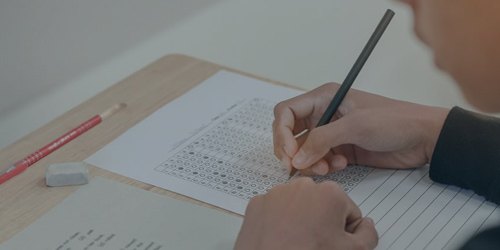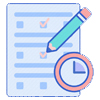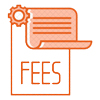Health and medicine-based apps often get a bad reputation because most app development companies don’t put the research and development dollars into making them clinically and scientifically accurate. That could be doubly severe for brain-focused apps that need a steeper verification process and sophisticated accuracy for imaging.
Studies Say, more app companies, especially those linked with colleges and universities, are putting work into boosting their science-based app clout. Professors at some universities, such as the University of Georgia, develop start-ups and license the products straight from campus. Other college-linked institutes, such as the Interactive Media Technology Centre at the Georgia Institute of Technology, work directly with corporations to test the validity of their health apps. Other apps, such as Headspace and Joyable, cite existing research about the benefits of meditation or therapy and include doctors or health experts on their boards of directors to claim validity.

This list of apps will help you delve into the brain and the questions you have about it.
1. 3D brain models: Turn, spin, and poke your way around the brain with the three top 3D model apps on the market. 3D Brain allows you to rotate 29 interactive structures, such as the temporal and frontal lobes. Investigate the way each brain region functions, what happens when it is injured, and how it is related to mental illness. Find links to case studies and modern research. Similarly, Brain Tutor HD uses rendered head and brain models, as well as fibre tracts created from real human MRI scans, to “look inside” the brain. Created by the Florida Institute for Neurologic Rehabilitation, the FINR Brain Atlas also shows 3D brain structures, injuries and resulting illnesses such as aneurysms, strokes, and haemorrhages.
2. Brain news: Can’t get enough of the latest studies about the brain? Brain Sights pulls together several sources to filter the news for you about the brain, neuroscience, and psychology research daily. You can filter the news outlets and journals you want to include, in addition to tagging and social media integrations so you can save and share the stories you like most. If you prefer to search through the news yourself, journals such as the Journal of Neuroscience and Neurology have their own apps so you can see the latest full issues in context.
3. Head pain: If you’re more interested in looking for a diagnosis that will help, tread carefully. Brain and head injuries are serious, so only a certified professional can help accurately. If you want to track your issues or learn initial facts about your concerns, however, give them a try. My Cluster Headache allows you to track the duration, intensity and treatment of a headache to help you find a pattern and have a clear conversation with a doctor. You can track your treatments and how they help your headaches, too. For those on the athletic field, Concussion Assessment & Response may help the next time a player is bonked on the head. The app gives instructions for assessing a concussion, tracking recovery, and testing whether an athlete is ready to return to the field. For a more general look at neurological disorders, symptoms and tests, turn to the 5-Minute Neurology Consult.
4. Memory issues: As with the diagnostic apps, it’s best to turn to a doctor when there are serious concerns about memory loss and cognitive functioning, but a few on the market are recommended as the most reliable brain training tools that can go hand-in-hand with doctor visits. The Memory Orientation Screening Test, or MOST, measures memory and executive function, particularly for older patients. It’s mostly focused on the measurement, rather than the improvement, of mental decline. Similarly, Neuro track — which has received funding from the National Institutes of Health and others — uses eye-tracking technology to detect signs of declining memory. The technology is still developing, but you can pay to take a test and then track progress on an app later.
5. Neuroscience: NeuroSclice is an interactive neuroanatomy app that helps you learn your neuroanatomy using interactive mapped images. Each slice has neuroanatomical regions mapped out so that you can familiarise yourself with nuclei and tracts of the brain and spinal cord. NeuroSlice can be useful for training neurologists, neurosurgeons, medical students, and neuroscience students. It comprises 40 images taken from MRI scans and stained brain sections, which have been digitally labelled with the anatomical regions. They are all downloaded in the app so you can browse offline. The program allows you to: touch a region to highlight it, and its name will be displayed; select the name of a region, and the region will be highlighted; search the database of regions to show which slices a given locus is visible. Most regions also have a short description, explaining the significance of the region. The app offers straightforward and interactive anatomy identification functionality that serves as a one-of-its-kind study tool for students preparing for those difficult neuroscience and neuroanatomy classes at universities or medical schools.
6. NeuroCards: NeuroCrads is neuroscience studying app, in which you can easily review notecards of pre-added terms and take quizzes to ensure that you know what you’re talking about in your studies. You can progress through the sections bypassing the quizzes at the end of each section. The app is best suited for people starting in a neuroscience program, but it’s free so anyone is welcome to it.
7. Promega(Android; iPhone) – this suite of useful functions have been compiled as a handy and user-friendly app. The highlight is probably the Bio math app, which helps with conversions like? g to pmol, molar ratios of insert: vector concentrations, melting temperature calculations etc.;
8. Cell Imaging Life Technologies (Android; iPhone) – This app helps you to find suitable fluorescent dyes, reagents and protocols for fluorescence microscopy. Useful reference when you’re on the move and generating new ideas for your next project;
9. Qiagen App (Android; iPhone) – Lists tables of commonly used lab buffers and solutions and features conversion and dilution calculators;
10. Zappy Lab Bench Tools (Android; iPhone) – a bundle of tools for the life science lab, most notably the calculator for reagent solutions and a protocols checklist











